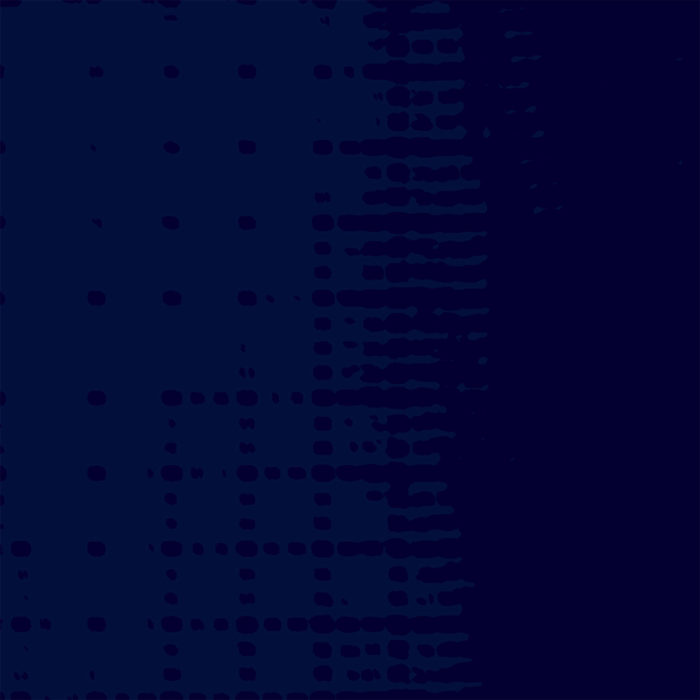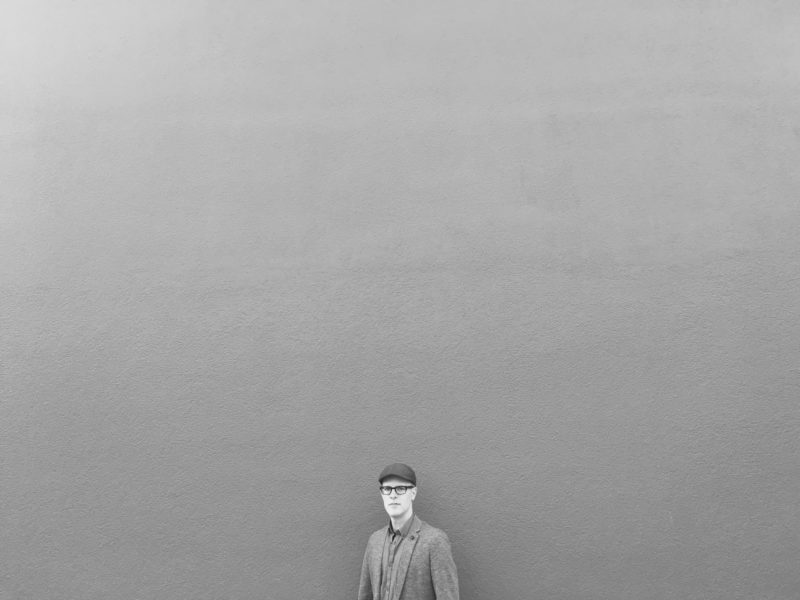Released to commemorate one year since legendary artist Mika Vainio’s passing, Richard Chartier has created a fitting tribute to the artist, his legacy, and also his undeniable influence on Chartier’s own work. The final product is less of an overt tribute, at least in sound, and functions more as a knowing homage that synergizes the core elements of Vainio’s lengthy body of art via Chartier’s undeniably nuanced and complex aesthetic.
Chartier has stated that it was Vainio’s work: solo, with Pan Sonic, and in the Ø and Philus guises, that reignited his career in experimental electronic music after a three year break some 20 years ago. The parallels in their art are distinctly different, but very much complementary. Vainio’s focus was often more rhythmic in nature, and sometimes challenging and harsh, but his use of clean, pure tones and electronic spaces can clearly be heard in Chartier’s solo work, as well as via his Pinkcourtesyphone project.
The 40+ minute “Central” is subtle in its opening minutes: buzzing electronics, crackling static, and wide open spaces. White noise and wet distortion eventually are introduced, cutting through the digital fragments and otherwise fill the mix. Like Vainio’s work, Chartier trades extensively in ultra high tinnitus-like frequencies that come and go, at times lying in the furthest reaches of human hearing. Unsurprisingly, this can be a bit unpleasant at times, but fitting since the result is not unlike some of Pan Sonic’s best work.
Eventually Chartier brings the mid-range up in more sustained passages, with a subtle bit of pulsation that could almost pass for a rhythm. He adjusts the diverging layers: tones, static, pulses, all things that appeared in Vainio’s work. Here, however, they are presented almost clinically, dissected out to study their most basic elements. Crackles of interference are melded into pseudo-rhythms as tightly compacted, sustained drones underscore the proceedings. After a lengthy section of shimmering, metallic electronics, the sound becomes hollower, almost mournful, as the piece comes to its quiet, sparse conclusion.
In comparison, the shorter “Unquiet” has a strong flow to it, but not the same extent of drastic shifts and evolution that can be heard in “Central”. Chartier immediately creates a force to be reckoned with: cascading, stuttering electronics and stuttering noise surge out with more force than I am used to from his work. Here he clearly captures the more chaotic side of Vainio’s sound in the form of heavy fuzz and some low-end heavy rumbling layers. The essential components to “Unquiet” stay in place for most of the piece, so the sense of change is less prominent than it was on “Central”, but within the confines of a seven minute composition this is no detriment at all. To mix things up, Chartier closes with a bit of interference and a lovely mournful bit of ambience that fits the intent of the album perfectly.
One of the reasons Richard Chartier excels with Central (for M. Vainio) is that he pays a fitting, reverential tribute to Mika Vainio and his enduring influence, but by emphasizing said influence more than an emulation or an unnecessary attempt direct interpretation. Themes from all of Vainio’s body of work are here, but translated and interpreted through Chartier’s understated, careful touch as a brilliant composer. There are some other moments that are not quite so subtle, especially throughout the aptly titled “Unquiet”, but these act as a perfect synergy between Vainio’s more abrasive tendencies filtered through Chartier’s thoughtful deliberateness. The result is a loving tribute that illuminates the linkage between the two legendary sound artists as best as anything could.
(brainwashed.com)
For two decades Richard Chartier has been releasing minimal sound art that has ranged from nearly inaudible sine waves to the flounce and circumstance of smart post-techno records from his alter ego, Pinkcourtesytelephone. Here, on his respectable LINE imprint of sound art editions comes his tribute to a peer in the industry who we lost at only 53yo last year, Mika Vainio. Some listeneres out there will know him from his work as Ø or as half of the duo Panasonic or Pan Sonic as they shortly after emerged, a prolific player in the contemporary electronic sound scene. Chartier’s Central (for M.Vainio) consists of only two tracks, the title/central piece which runs for forty minutes and is a wash of humming tone, dusty drone and what seem like distorted frequency tests.
Towards mid track the stripped down haze puts the listener in a poker-faced waiting game, fueled by deep reverberations and a dizzying hollowed out void. Depending on where you place your headphones or speakers be aware that the channels will deliver this ambient concrète with variation. The louder you play this the fuller the room becomes with new layers on fluttering sonic pulsing, as if his sound source were a gaggle of tall birds taking off for Winter, up real close and stretch-processed. It’s drunken and gutsy.
The record then fades into an industrial wash of grays over the last ten minutes or so, leading to the only other track here, Unquiet (for M.Vainio). Given the dedication here (by both artists equally) to the field of noise in one form or another, this is likely the first time I’ve experienced this much gusto from the often reserved and calculated Chartier. And when this track opens its like the thrown-up roar of a b-monster movie. This is an apropos homage, and there is nothing delicate or overly calculated here, more like maneuvering a really rough road, or documenting an implosion at 24 frames a second. There’s a just a strong sense of suspension that feels mighty real.
(toneshift.net)


